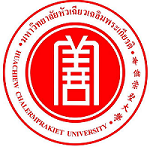Please use this identifier to cite or link to this item:
https://has.hcu.ac.th/jspui/handle/123456789/3757Full metadata record
| DC Field | Value | Language |
|---|---|---|
| dc.contributor.author | Chairat Techvuthiporn | - |
| dc.contributor.author | Panida Boonyaritthongchai | - |
| dc.contributor.author | ชัยรัตน์ เตชวุฒิพร | - |
| dc.contributor.author | พนิดา บุญฤทธิ์ธงไชย | - |
| dc.contributor.other | Huachiew Chalermprakiet University. Faculty of Science and Technology | en |
| dc.contributor.other | King Mongkut’s University of Technology Thonburi. School of Bioresources and Technology | en |
| dc.date.accessioned | 2025-03-22T12:24:02Z | - |
| dc.date.available | 2025-03-22T12:24:02Z | - |
| dc.date.issued | 2016 | - |
| dc.identifier.citation | International Food Research Journal 23,5 (2016) : 1879-1886 | en |
| dc.identifier.uri | https://has.hcu.ac.th/jspui/handle/123456789/3757 | - |
| dc.description | สามารถเข้าถึงบทความฉบับเต็ม (Full Text) ได้ที่ : http://www.ifrj.upm.edu.my/23%20(05)%202016/(7).pdf | en |
| dc.description.abstract | The effects of different anti-browning compounds (ascorbic acid, citric acid, L-cysteine and glutathione) on L*-value, hue angle, brown scores and brown pigments of fresh-cut mangoes cv. ‘Nam Dok Mai’ were investigated at four concentrations (0% as control, 0.5%, 1.5% and 2.5%). The browning attributes of treated fresh-cut mangoes were modelled to express the processes and to analyse the data obtained. The results revealed the similar changing tendency of L*-value and hue angle. They decreased in time during storage at 10 °C, while the brown scores and amount of brown pigment increased. All processes were found to follow a first order reaction mechanism of decay or growth. A validation experiment was conducted by dipping fresh-cut mangoes in a different anti-browning solution of ascorbic acid, citric acid, L-cysteine or glutathione at 1.5% concentration and distilled water as control. The estimated values for the browning attributes using proposed models had good agreement with the measured values. In this validation experiment, other changes namely respiration rate, and enzymes related to browning (polyphenol oxidase (PPO) and peroxidase (POD)) were determined. Treatment with L-cysteine or glutathione was effective in suppressing tissue metabolism and enzyme activity, while citric acid significantly inhibited the growth of microorganisms as indicated by total plate count (TPC) (data not shown). | en |
| dc.language.iso | en_US | en |
| dc.subject | Barracuda mango | en |
| dc.subject | มะม่วงน้ำดอกไม้ | en |
| dc.subject | Minimally processed fruit | en |
| dc.subject | ผลไม้สดพร้อมบริโภค | en |
| dc.subject | Fresh-cut fruit | en |
| dc.subject | Antibrowning agent | en |
| dc.subject | สารยับยั้งการเกิดสีน้ำตาล | en |
| dc.title | Effects of anti-browning agents on wound responses of fresh-cut mangoes | en |
| dc.type | Article | en |
| Appears in Collections: | Science and Technology - Articles Journals | |
Files in This Item:
| File | Description | Size | Format | |
|---|---|---|---|---|
| Effects-of-anti-browning-agents-on-wound-responses-of-fresh-cut-mangoes.pdf | 56.77 kB | Adobe PDF | View/Open |
Items in DSpace are protected by copyright, with all rights reserved, unless otherwise indicated.
